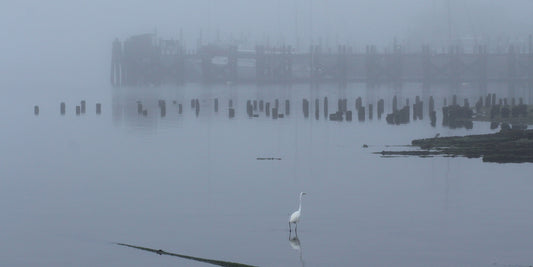Tucked away among the collections of Yale’s Beinecke Rare Book & Manuscript Library lies one of the world’s most mysterious manuscripts, a codex of more than 100 double-sided sheets written six centuries ago in an unknown language, with diagrams and illustrations depicting odd plants and women bathing in green pools. Its mysteries have withstood repeated inquiries from philosophers, alchemists, linguists, code-crackers, computers and the internet. To this day not a single word has been definitively deciphered.
In the Beinecke’s call system, the book is catalogued simply as MS 408. To the wider world, it’s known as the Voynich Manuscript. At first glance, its florid text looks like a script out of The Lord of the Rings, but that, at least, can be translated at your local fantasy convention. Not the Voynich. It’s the only known example of the language it contains, and it’s left behind a multi-century trail of failed linguistic, cryptographic and, more recently, computer-analytic decoding attempts.
But we do know a few things. Carbon dating performed in 2009, for instance, pins the manuscript’s creation to between 1404 and 1438 C.E. with 95% confidence. Even so, recorded history only caught up with the manuscript some 150 to 200 years later, in the court of Holy Roman Emperor King Rudolf II, who reigned over Italy and Germany from 1576 to 1612. It’s believed that after the manuscript left Rudolf’s court, it floated between a royal pharmacist, an alchemist, a Bohemian doctor, a professor of mathematics in Rome and multiple Jesuit libraries (where it survived two suppressions) over the course of 300 years, before being sold by the Jesuits to a Polish revolutionary-turned-book-antiquarian by the name of Wilfred Voynich.
That was in 1912. Increasingly fascinated with the document, Voynich contacted experts in paleography, anatomy, history and cryptography, none of whom could shed much light. Voynich assumed, as did many since the time of Rudolf II, that the manuscript was a ciphered work of Roger Bacon, a 13th-century friar and early advocate of the scientific method whose achievements were so renown that he earned the nickname “miracle doctor.” But subsequent research—including that 2009 carbon dating—strongly suggests Bacon isn’t behind the codex.
In fact, much of the research yielded no new understanding at all. During the final days of World War II, William F. Friedman, who led the team that deciphered Japan’s Angōki B-kata encryption machine, codenamed “Purple,” threw a team of military code-breakers at the Voynich as a project to pursue in their spare time. Friedman supposed the script was an early form of constructed language, but after three decades of on-and-off attempts, he threw up his hands and declared the manuscript impossible to crack.
To this day, most of the fundamental questions remain unanswered. If the codex contains a bonafide language—that is, if its characters aren’t just gobbledygook—is it an organic language? A constructed language? A ciphered language? Does the text have anything at all to do with the pictures? Certain characters seem to resemble the roman a, c, m, n, o, and i, while others resemble Arabic numbers and still others resemble Latin abbreviations, alchemical symbols and early Renaissance ciphers. Gerard Cheshire, a researcher at the University of Bristol, claimed in 2019 that he had successfully translated the Voynich using a rules-shifting “intuitive” approach—and thereby demonstrated that the text is the world’s only surviving example of “proto-Romance,” a once-common colloquial Mediterranean precursor to the contemporary Romance languages we know today. But few if any other researchers have been willing to endorse his findings.
Meanwhile, there’s another possibility: What if, at its core, the document was a deception? The manuscript’s impregnability has caused more than one expert to entertain the thought. In 1995, medieval herbs expert Sergio Toresella dated the manuscript to about 1460 but suggested its content was intended to impress the clientele of a medieval quack.
Yet even if you grant the special resources and skills it would’ve taken to create such a document, the Voynich seems rather elaborate for a medieval con. Contemporary analysis finds distinct vocabularies among the book’s six sections—believed to represent botanical, biological, cosmological, astronomical, pharmaceutical and recipe specializations—with certain words that never cross between sections. Researchers have also found that the script follows key patterns of natural languages—including Zipf’s Law, which states that the most common word of a typical language appears roughly twice as frequently as the second-most common word; about three times as frequent as the third-most common word; and so on.
In 2003, Gordon Rugg proposed a hoax theory distinct from Toresella’s: that the Voynich could be a gibberish document originally created to bilk Rudolf II, an avid collector willing to spend gold on strange artifacts and ephemera. But in 2014, professor Stephen Bax of the University of Bedfordshire claimed to have deciphered several words following the proper names of five suspected or fully identifiable plants and the Taurus constellation, suggesting, at least, that the Voynich’s language isn’t merely convincing nonsense.
Bax suggested the book is a compendium of botany and astrology much like “Royal 19 C I,” a 14th-century natural encyclopedia held by the British Library. Less rigor-bound observers, naturally, hope it contains some transcendental knowledge, perhaps the work of an alien civilization. Others think it’s merely a glimpse into the mind of a madman.
The Beinecke Library’s research room makes it possible, in theory, to inspect the physical manuscript, if you take the proper steps and win curator approval. It’s much simpler, however, to browse all of the Voynich’s pages via high-definition digital or even scanned and printed images, making it possible to decipher the document from your kitchen table.
Assuming, of course, there’s any meaning to decipher.
Written by Daniel Shkolnik. Images courtesy of the Yale Library. This updated story was originally published on February 2, 2016.







